United States AAF Bombers, Fighter Planes & Warbirds of World War II
U.S. Army Air Force Aircraft Production for WWII
Type of Aircraft |
Number Built |
Bombers |
97,810 |
Fighters |
99,950 |
Transport |
23,929 |
Trainers |
57,623 |
Total |
279,312 |
The United States manufactured about 300,000 military aircraft just prior to, and during, World War II. Total US aircraft production totaled 324,750, with main aircraft types as shown in the table to the right.
Featured below are several bomber warbirds: the B-17 Flying Fortress, the B-24 Liberator, the B-25 Mitchell and the B-29 Superfortress, the dominant bombers used by the United States during World War II.
We are also currently featuring several other warbirds, including the Curtiss P-40 Warhawk, P-51 Mustang, Douglas C-47 Skytrain, C-60 Lodestar, and the T-6 Texan trainer.
B-17 Flying Fortress
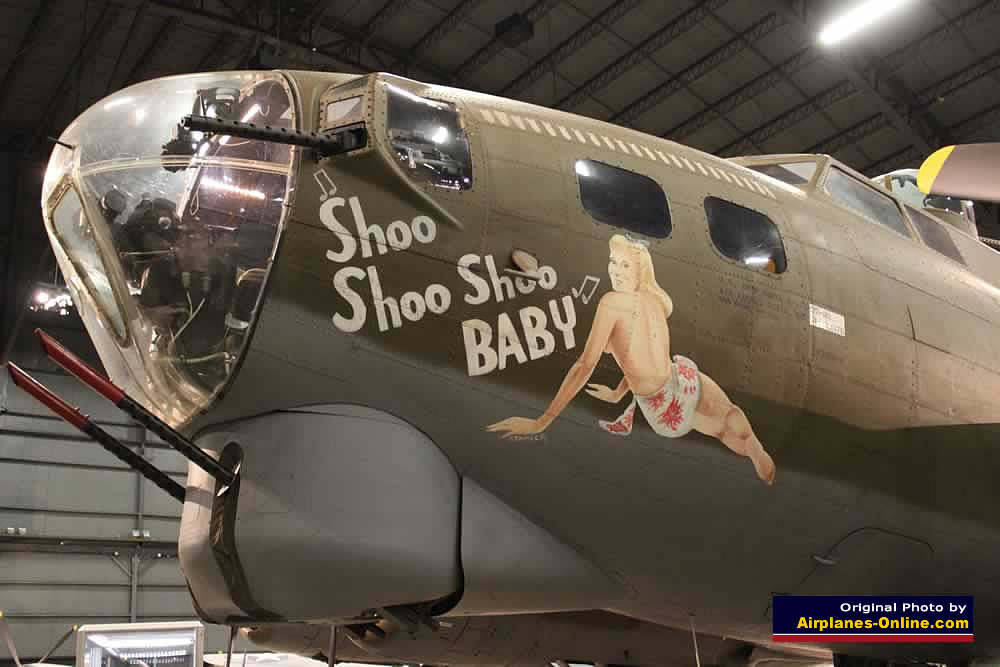 Boeing B-17G Flying Fortress "Shoo Shoo Shoo Baby", S/N, 42-32076, at the National Museum of the United States Air Force, Wright-Pattersn AFB, Dayton, Ohio |
The Boeing B-17 Flying Fortress four-engine heavy bomber is one of the most famous, and successful, airplanes ever built. The B-17 received the name "Flying Fortress" from a Seattle news reporter who commented on its defensive firepower, and said "It's a Flying Fortress".
The original intent for the B-17 was the protection of the U.S. mainland from invasion fleets. In 1934, the Boeing Aircraft Company of Seattle, Washington, began construction of a four-engine heavy bomber. Known as Boeing Model 299, it first took flight on July 28, 1935. Delivery of these first production models was between January 11 and August 4, 1937.
B-17s served in every World War II combat zone. The aircraft is best known for daylight strategic bombing of German industrial targets. The B-17 flew mostly out of England, equipping 26 of the 40 bombardment groups of the 8th Air Force.
Following the end of World War II, the B-17 was quickly phased out of use as a bomber and the Army Air Forces retired most of its fleet. Production ended in May 1945 and totaled 12,731.
A number of B-17 warbirds have been restored and are airworthy, and can be toured on the air show circuit across the USA.
... about the B-17, its specifications, history, production and photographs
B-24 Liberator
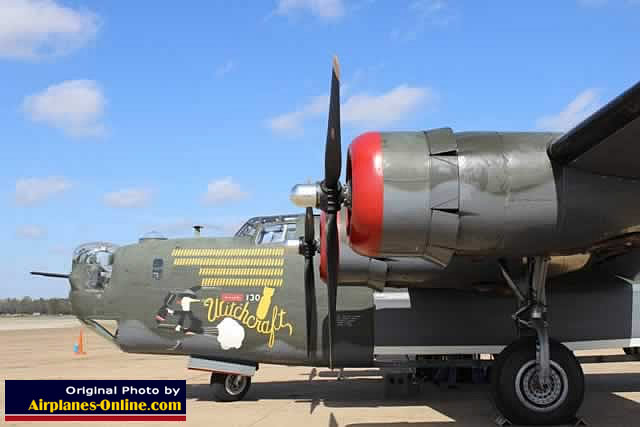 Consolidated B-24J Liberator "Witchcraft" (S/N 44-44052) of the Collings Foundation |
The Consolidated B-24 Liberator was a 4-engine, twin-tail heavy bomber designed by Consolidated Aircraft of San Diego. Its first flight was on December 29, 1939, and it began service in 1941.
The B-24 was a more modern design than the Boeing B-17 Flying Fortress, with a higher top speed, greater range, higher ceiling, and a heavier bomb load. But the B-24 was more difficult to fly, with heavy control forces and poor formation-flying characteristics. The positioning of the fuel tanks also made the plane prone to fire. The high fuselage-mounted wings also made it more difficult to survive crash landings on land or water.
The Willow Run manufacturing plant, located between Ypsilanti and Belleville, Michigan, was constructed during World War II by the Ford Motor Company for the mass production of the B-24 Liberator. On October 1, 1942, the first plane was completed and christened "The Spirit of Ypsilanti." The Willow Run Airport, with six runways to test planes, was also completed in 1942. At the peak of production, the assembly line was producing a Liberator an hour. On June 28, 1945 production ceased, after 8,685 planes had been manufactured.
A total of 18,493 Liberators were built, more than any other aircraft in World War II. Of the massive numbers of Liberators that were built, only server al survive today.
In the United States, only two B-24 airworthy warbirds remain, "Witchcraft" and "Diamond Lil".
... about the B-24 Liberator specifications, history, production and photographs
B-25 Mitchell
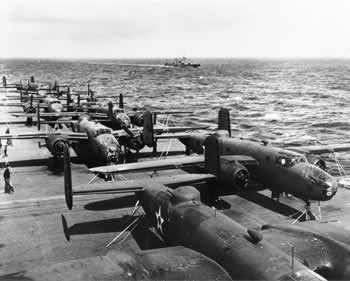 B-25s preparing for the Doolittle Raid on Japan |
The B-25 Mitchell was a twin-engined medium bomber used in World War II, and manufactured by North American Aviation. The B-25 was named in honor military aviation pioneer General Billy Mitchell.
The B-25 first flew on August 19, 1940, and the U.S. Army Air Corps accepted the first five B-25s in February of 1941.
The B-25 saw duty in every combat area being flown by the Dutch, British, Chinese, Russians and Australians in addition to U.S. forces.
Although the B-25 was originally intended for level bombing from medium altitudes, it was used extensively in the Pacific area for bombing Japanese airfields from treetop level and for strafing and skip bombing of enemy shipping.
The plane is well remembered for its role in the Doolittle Raid, on April 18, 1942, the first air raid by the United States to strike the Japanese homeland during World War II.
Of the 9,890 B-25s built during WWII, there are more than one hundred surviving aircraft around the world, most of which are located in the United States.
Many B-25 surviving warbirds are on flight status, such as "Yellow Rose" pictured here, and can be seen performing and on display at air shows across the U.S.
... about the B-25 Mitchell, its specifications, history, production and photographs
B-26 Marauder
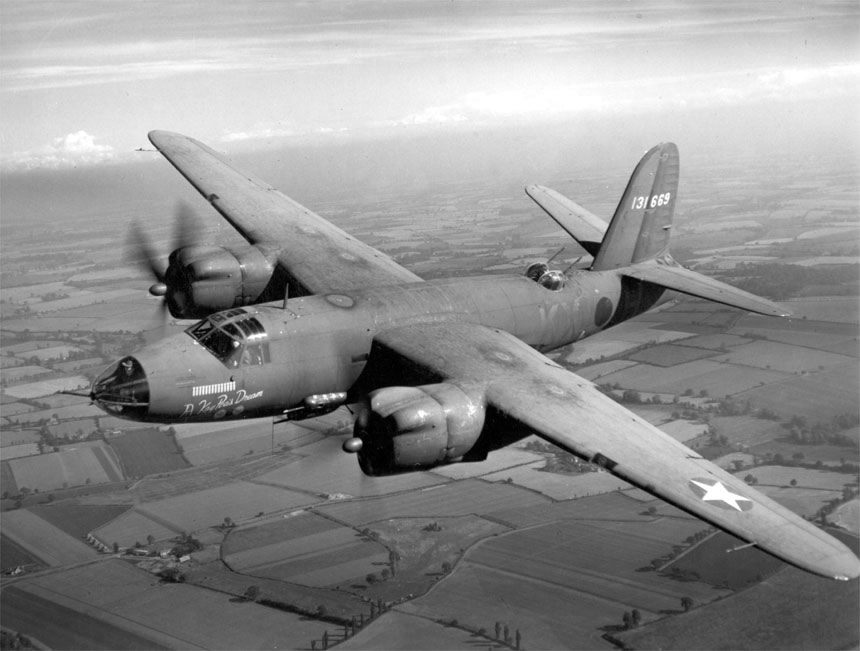 Martin B-26 Marauder in flight |
The Martin B-26 Marauder was an American twin-engined medium bomber that was designed and built by the Glenn L. Martin Company. The bomber was assembled at plants in Baltimore, Maryland, and Omaha, Nebraska.
The B-26 saw extensive service during World War II. First used in the Pacific Theater in early 1942, it was also used in the Mediterranean Theater and in Western Europe.
A total of 5,288 Marauders were built between 1941 and 1945. After the Marauder was retired, the unrelated Douglas A-26 Invader assumed the "B-26" designation, which led to confusion between the two aircraft.
... about the B-26 Marauder, its specifications, history, production and photographs
B-29 Superfortress
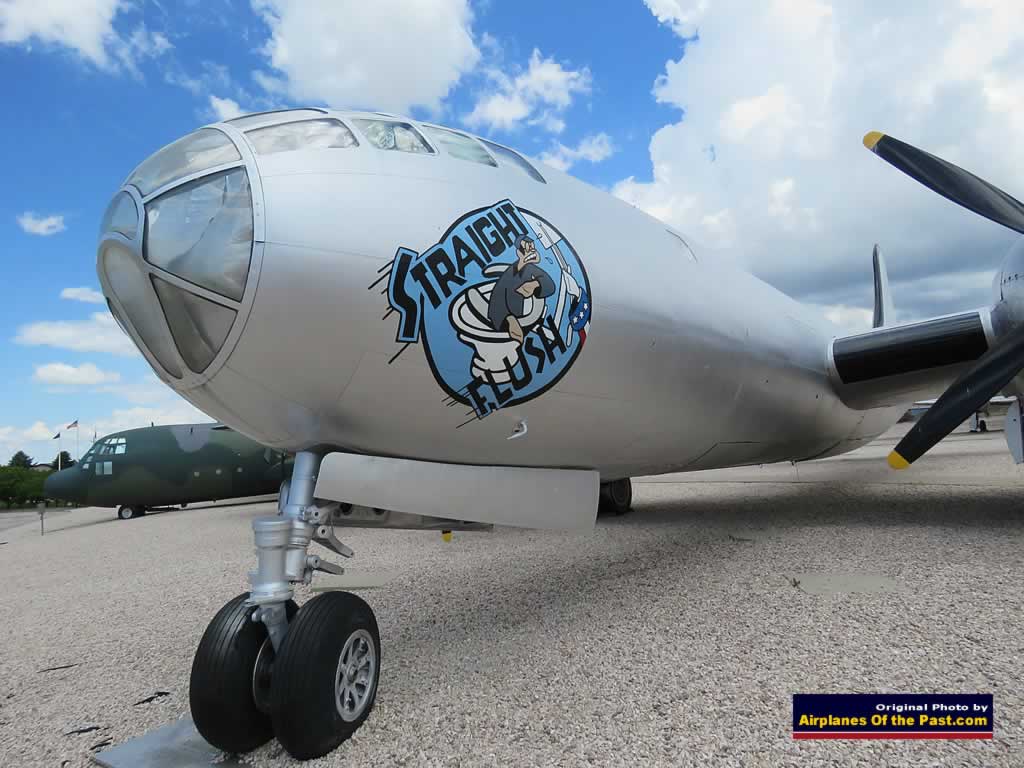 B-29 Superfortress "Straight Flush" |
Boeing began work on a pressurized long-range bomber in 1938. In December 1939, the Army Air Corps issued a formal specification for a so called "superbomber", capable of delivering 20,000 lbs of bombs to a target 2,667 miles distant, at a speed of 400 mph.
The B-29 Superfortress featured the first ever fully pressurized nose and cockpit in a bomber; an aft area for the crew was also pressurized. Since the bomb bays were not pressurized, a pressurized tunnel was devised to connect the fore and aft crew areas. A retractable tail bumper was provided for tail protection during nose-high takeoffs and landings.
In wartime, the B-29 was capable of flight up to 31,850 feet at speeds of 350 mph. Designed as a high-altitude daytime bomber, the B-29 flew more low-altitude nighttime incendiary bombing missions.
Colonel Tibbets piloted the B-29 "Enola Gay" (Serial Number 44-86292) on August 6, 1945, and dropped "Little Boy" over Hiroshima, Japan. He had named the plane after his mother, Enola Gay Tibbets. The plane had been built at the Glenn Martin plant in Omaha, Nebraska. Three days later the "Fat Man" was dropped on Nagasaki by the B-29 "Bockscar".
A total of 3,970 production B-29s were built at several plants across the U.S.
... about the B-29, its specifications, history, production and photographs
Curtiss P-40 Warhawk
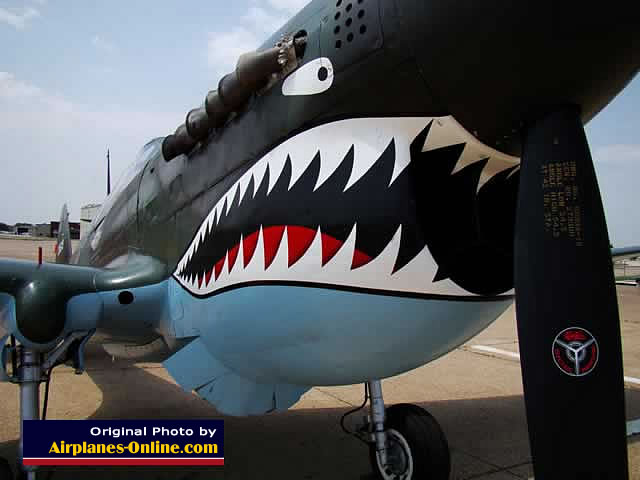 Curtiss P-40 Warhawk 29629 of the Commemorative Air Force at Pounds Regional Airport in Tyler, Texas |
The Curtiss P-40 was the United States' best fighter available in large numbers when World War II began. P-40s engaged Japanese aircraft at Pearl Harbor and in the Philippines in December 1941. They also served with the famed Flying Tigers in China in 1942.
Though often slower and less maneuverable than its adversaries, the P-40 earned a reputation in battle for extreme ruggedness. It served throughout the war but was eclipsed by more capable aircraft.
More than 13,738 P-40s were built during 1939-1944 at the Curtiss plant in Buffalo, NY. The P-40 served in the air forces of 28 nations, and was the third-most numerous US fighter produced for World War II.
Today, many P-40 warbirds have been restored and can be seen on the air show circuit.
... about the P-40 Warhawk, its specifications, history, production and photographs
P-51 Mustang
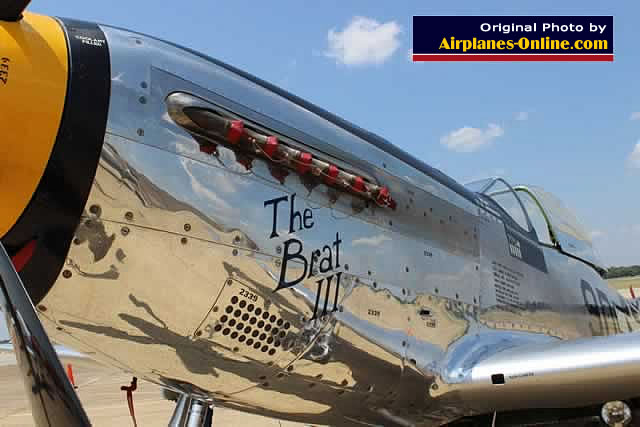 North American P-51D Mustang "The Brat III," S/N 44-72339, N251JC |
The North American P-51 Mustang was among the best and most well-known fighters used by the U.S. Army Air Forces during World War II. Possessing excellent range and maneuverability, the P-51 operated primarily as a long-range escort fighter and also as a ground attack fighter-bomber. The Mustang served in nearly every combat zone during WWII, and later fought in the Korean War.
Mustangs served in nearly every combat zone in WWII, including the Pacific where they escorted B-29 Superfortresses to Japan from Iwo Jima.
Between 1941 and 1945, the AAF ordered 14,855 Mustangs (including A-36A dive bomber and F-6 photo recon versions), of which 7,956 were P-51Ds.
Many P-51 warbirds have been restored and participate at air shows across the United States.
... about the P-51 Mustang, its specifications, history, production and photographs
C-47 Skytrain
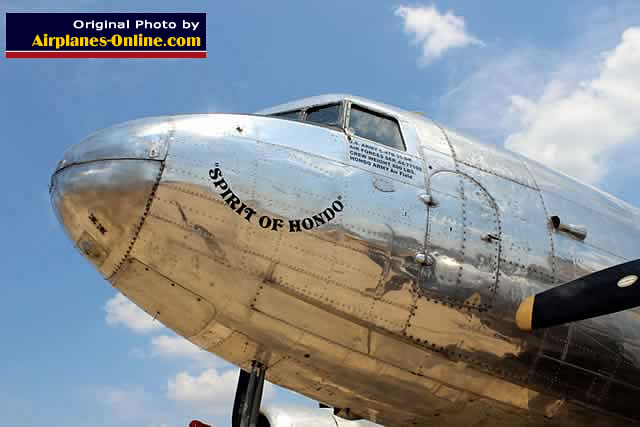 C-47B Skytrain "Spirit of Hondo" S/N 44-77109 |
The Douglas C-47 Skytrain, or Dakota when used by the Royal Air Force, is a military transport aircraft that was developed from the Douglas DC-3 airliner. The C-47 differed from the DC-3 in numerous modifications that included being fitted with a cargo door and a strengthened floor.
As a supply plane, the C-47 could carry up to 6,000 pounds of cargo. It could also hold a fully assembled jeep or a 37 mm cannon. As a troop transport, it carried 28 soldiers in full combat gear. As a medical airlift plane, it could accommodate 14 stretcher patients and three nurses.
More than 10,000 C-47 aircraft were manufactured at plants in Oklahoma City and in Santa Monica, CA.
Today, some remain in operation as private aircraft. Many others surviving C-47 aircraft have been restored and are on static display at air museums and airparks across the country, such as those at the Castle Air Museum and Pima Air Museum.
Others, such as the "Sky King" and "Hondo" warbirds have been maintained in air worthy condition, and can be seen on air tours and air shows.
The oldest DC-3 still flying is the original American Airlines Flagship Detroit which can be seen at airshows around the United States and is owned and operated by the nonprofit Flagship Detroit Foundation. The oldest surviving DC-3 is N133D, the sixth Douglas Sleeper Transport built in 1936.
... about the C-47 Skytrain, its specifications, history, production and photographs
C-60 Lodestar
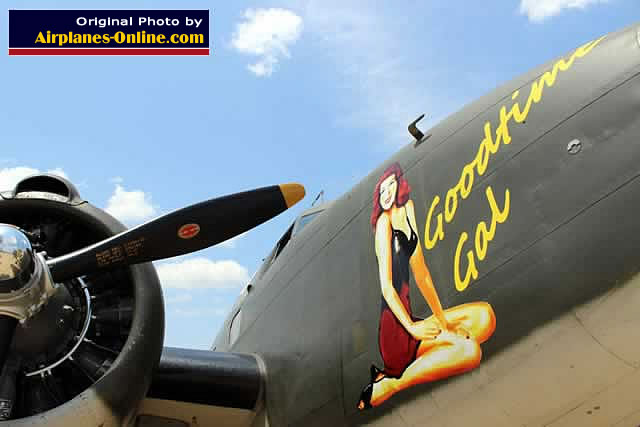 Lockheed C-60A Lodestar, 258005, "Goodtime Gal", a warbird restored and owned by the Houston Wing of the Commemorative Air Force (CAF) |
The C-60A Lodestar is a twin-engine transport based on the Lockheed Model 18, a civilian airliner, developed as a competitor to the Douglas DC-3. Slightly smaller and faster than the DC-3, it saw service with many airlines around the world.
A total of 625 Lodestars of all variants were built. Lockheed built more C-60As for the AAF (325) than any other version of the military Lodestar.
After the war, many military Lodestars were declared surplus and sold to private operators for use as cargo or executive transports.
The C-60A "Goodtime Gal" warbird was restored over an 8-year period by the Houston Wing of the Commemorative Air Force, and made its first flight after restoration in August of 2011. The aircraft was built in 1943, and is configured as a paratroop transport, complete with jump lights and a static line hookup. This is the same role in which she served during her WWII military service.
"Goodtime Gal" is based in Houston, but is on a regular tour around the country.
... about the C-60 Lodestar, its specifications, history, production and photographs
T-6 Texan
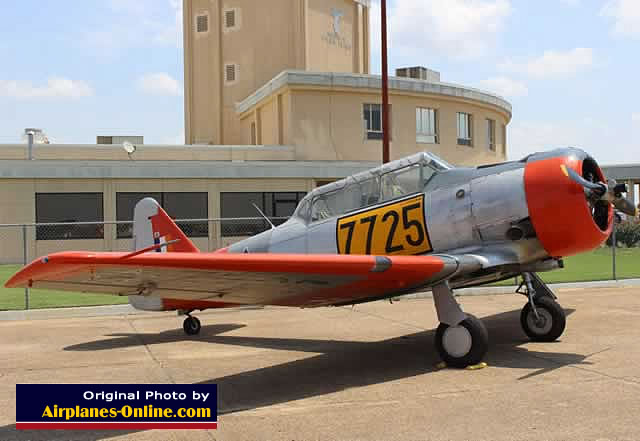 North American T-6G Texan 7725 |
The North American Aviation T-6 Texan was a single-engine advanced trainer aircraft used to train pilots of the United States Army Air Forces, United States Navy, Royal Air Force and other air forces of the British Commonwealth during World War II and the 1950s.
For more than six decades after its design in 1937, the North American AT-6 Texan were used throughout the world as advanced trainers, artillery spotters (in Korea and Vietnam among other theaters), and as counterinsurgency and fighter-bombers by numerous developing countries.
Today there are hundreds of Texans flying in private hands, and their value as vintage warbirds continues to rise.
One reason there are so many T-6s still flying is because so many were built. From 1937 to the early 1950s North American and other manufacturers produced more than 16,000 Texans to satisfy the demand for advanced trainers.
It remains a popular warbird aircraft used for airshow demonstrations and static displays.
... about the T-6 Texan, its specifications, history, production and photographs
Warbirds
 |
A "Warbird" is generally considered to be any vintage military aircraft operated by civilian organizations and individuals or, in some instances, by historic arms of military forces. Warbirds are restored and kept in flying status by dedicated groups such as the Commemorative Air Force (CAF), the Collings Foundation, the Experimental Aircraft Association (EAA) and many similar organizations.
These are all committed to the preservation of military aviation history through the restoration and display of historic aircraft for the public to see, touch, tour and fly. They offer static displays of their warbirds, fly-bys, battle reenactments, rides and educational programs at air shows and other aviation events across the USA.
Photos of U.S. Army Air Force Planes used in World War II
Boeing B-17G Flying Fortress "Miss Liberty" S/N 231340 at the Barksdale Global Power Museum more photos |
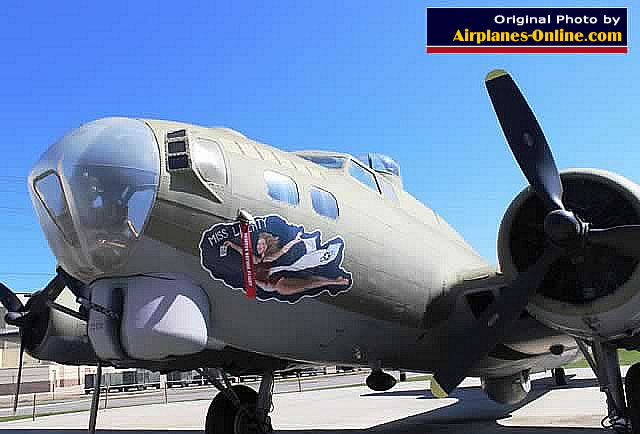 |
Consolidated B-24J Liberator "Witchcraft" (S/N 44-44052) of the Collings Foundation |
 |
North American PBJ-1J "Devil Dog" patrol bomber, a B-25 variant for the Marine Corps Part of the Devil Dog Squadron of the Commemorative Air Force (CAF), located in Georgetown, TX |
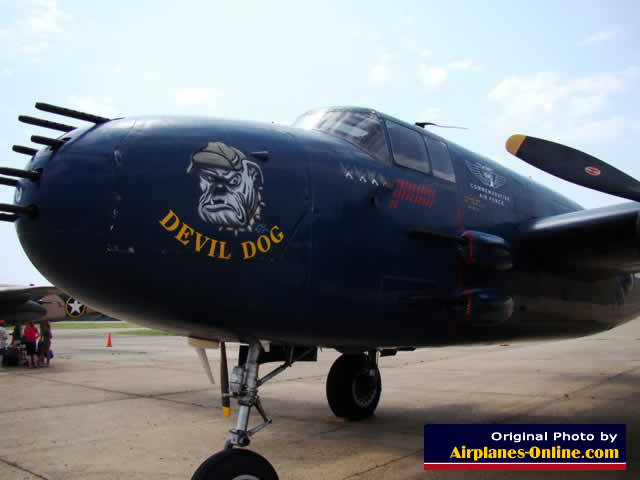 |
B-29 "FiFi" of the Commemorative Air Force |
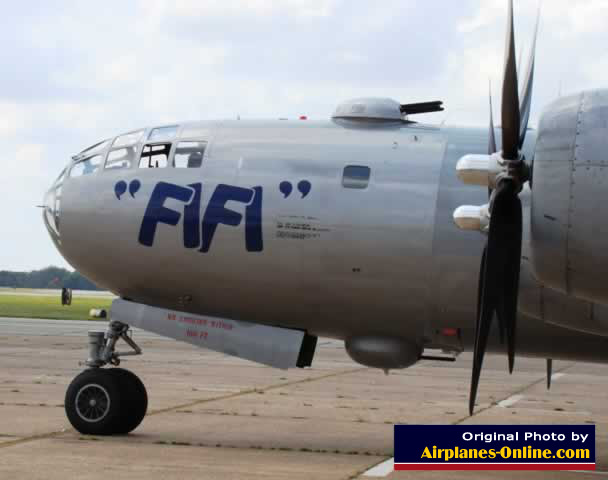 |
Curtiss P-40N Warhawk "O'Riley's Daughter" in Seattle |
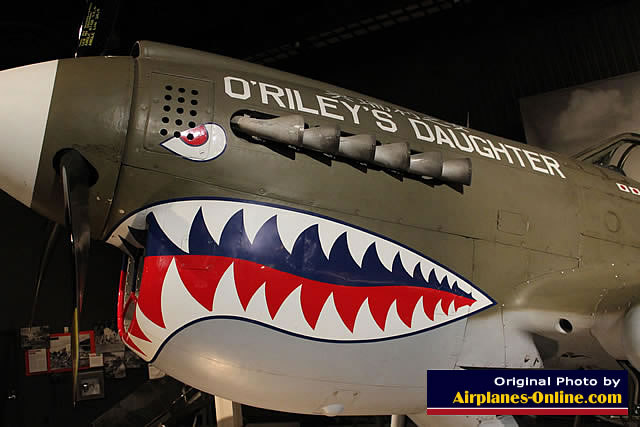 |
P-51 Mustang "Betty Jane" of the Collings Foundation, seen at Tyler Pounds Regional Airport |
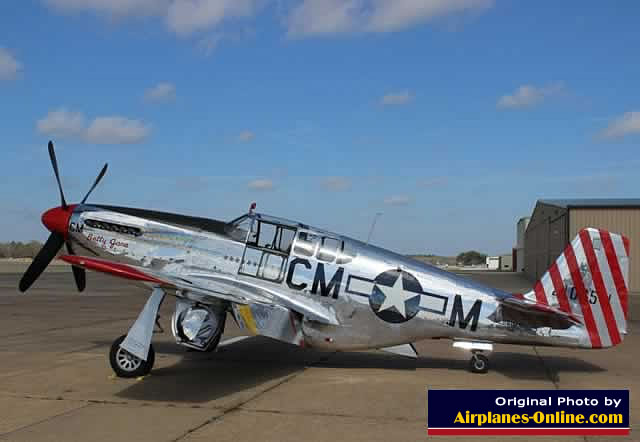 |
C-47B Skytrain
"Spirit of Hondo" S/N 44-77109 |
 |
Lockheed C-60A Lodestar, 258005, "Goodtime Gal", parked at Pounds Regional Airport in Tyler, Texas |
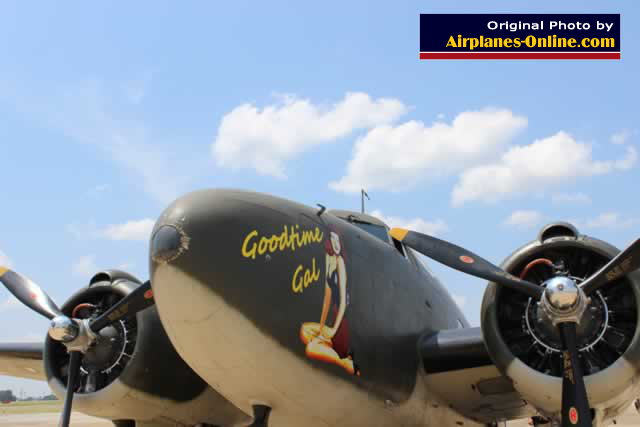 |
North American Aviation's T-6 Texan, S/N 51-14429, N729AM, Buzz Number TA-429 |
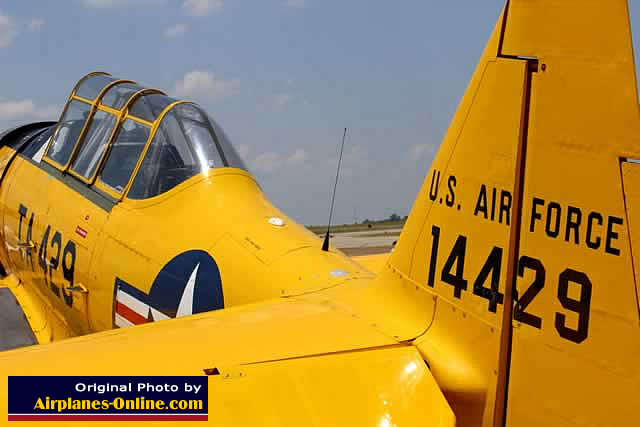 |

